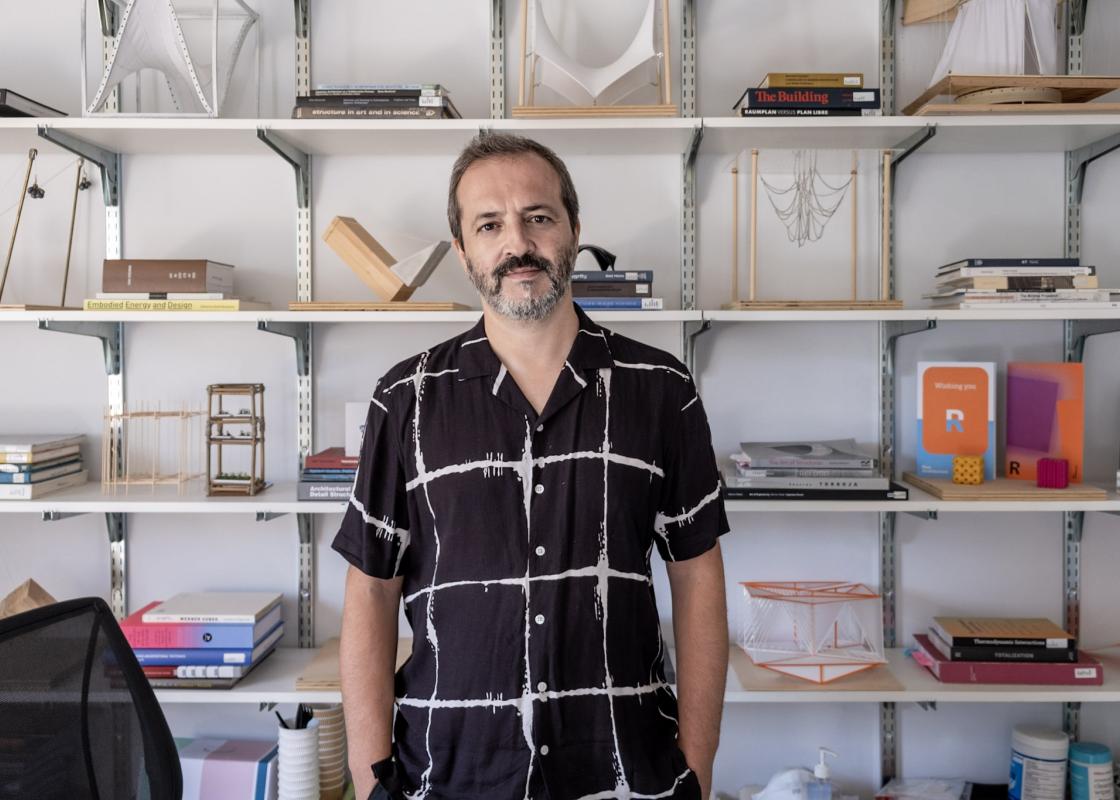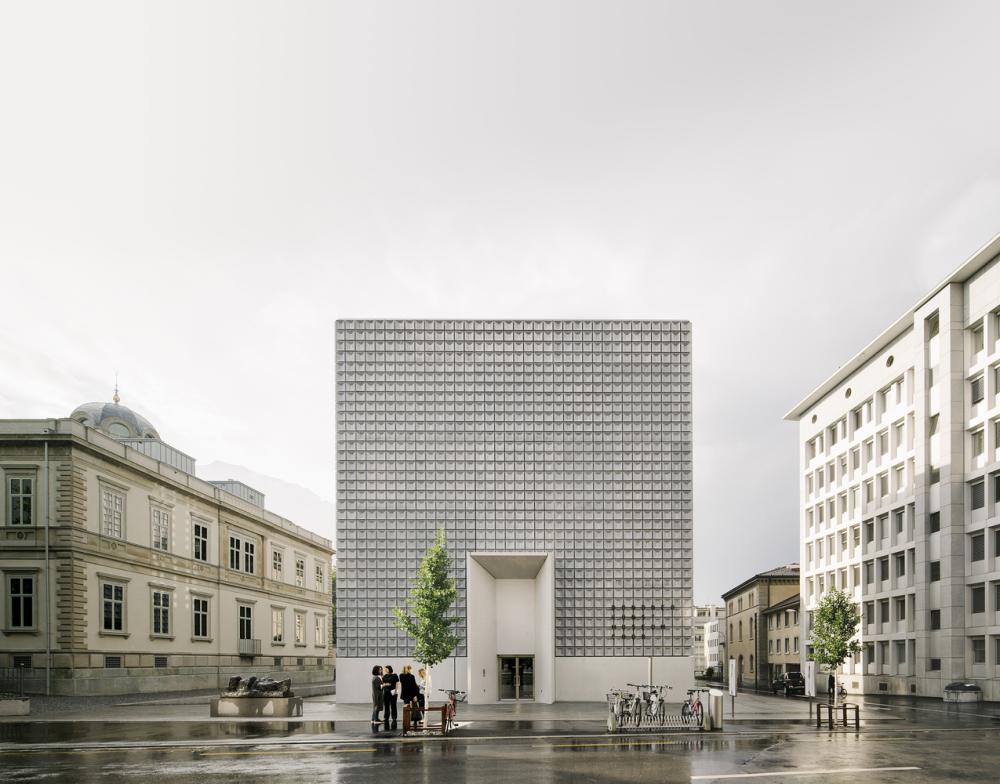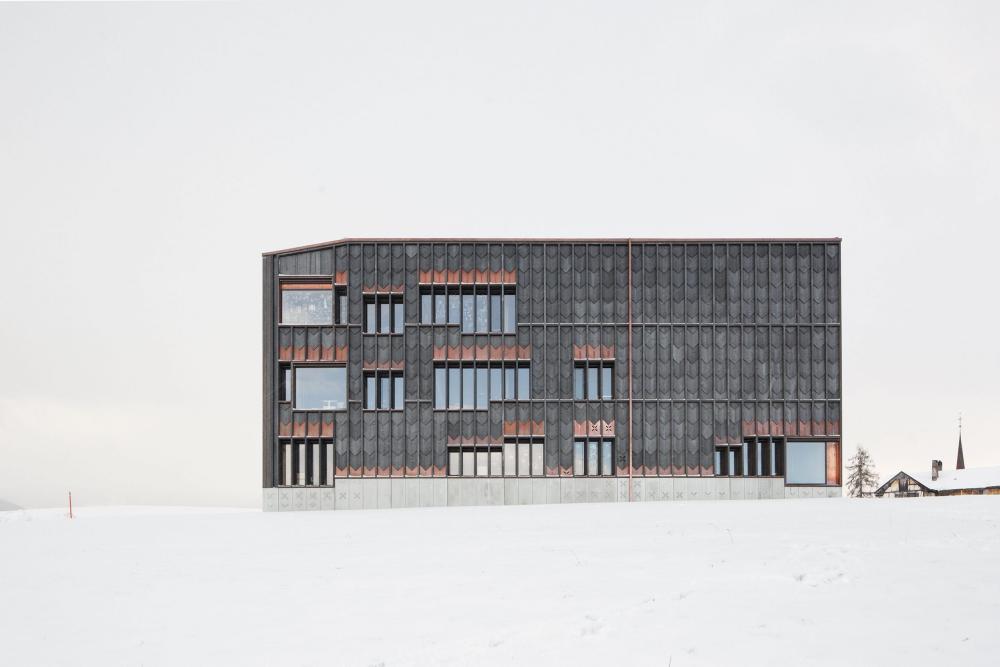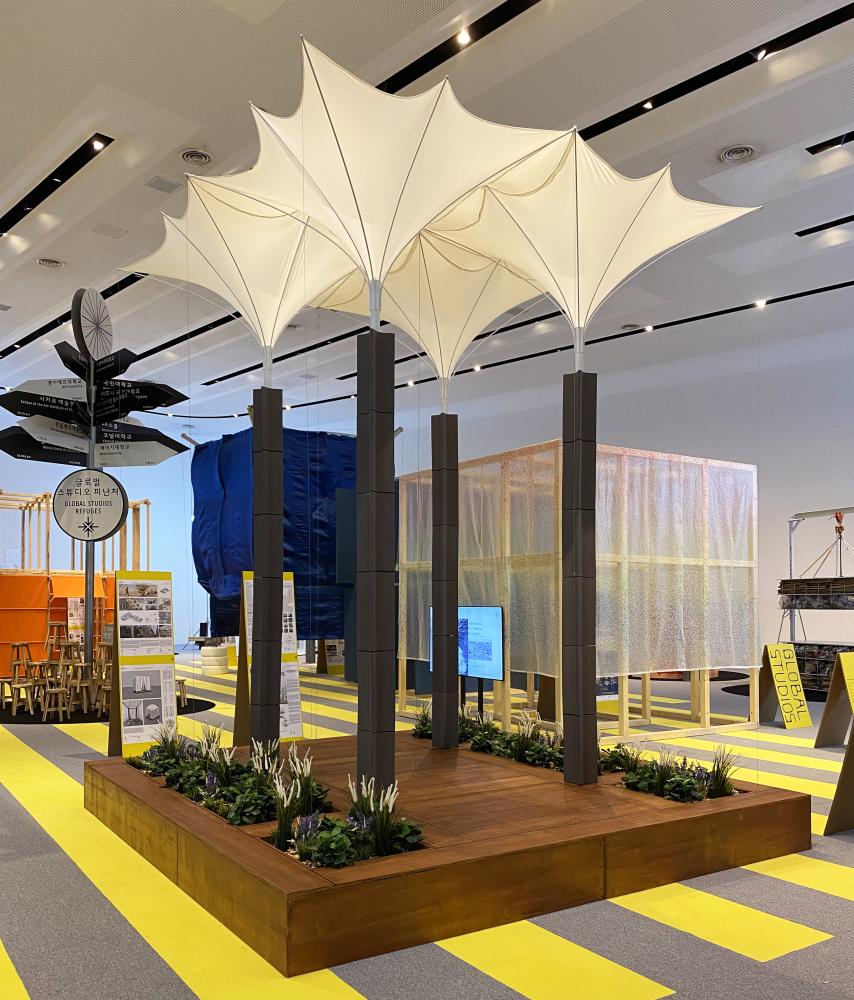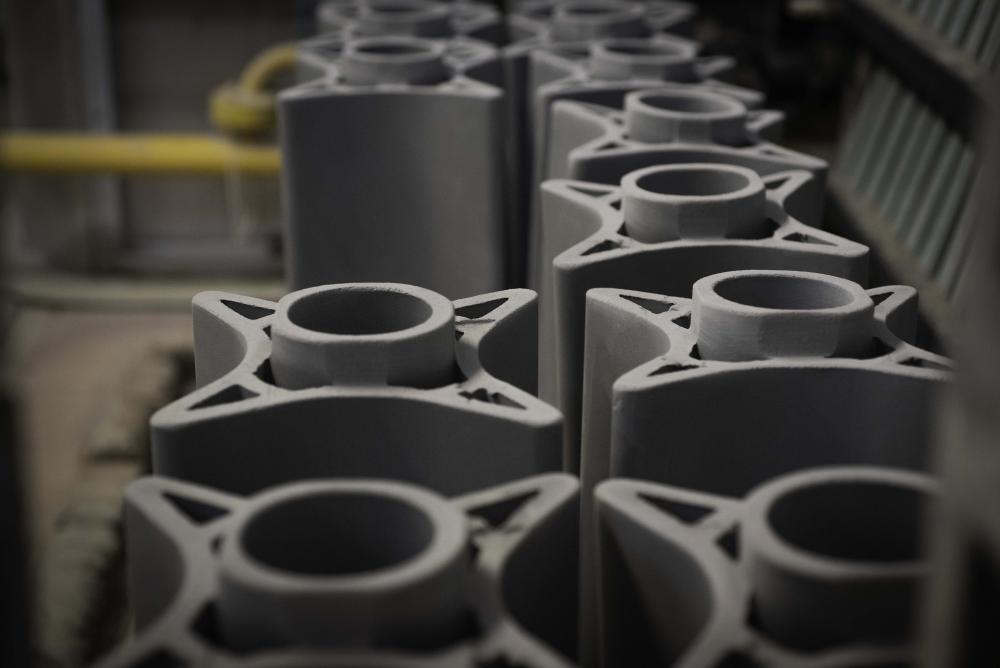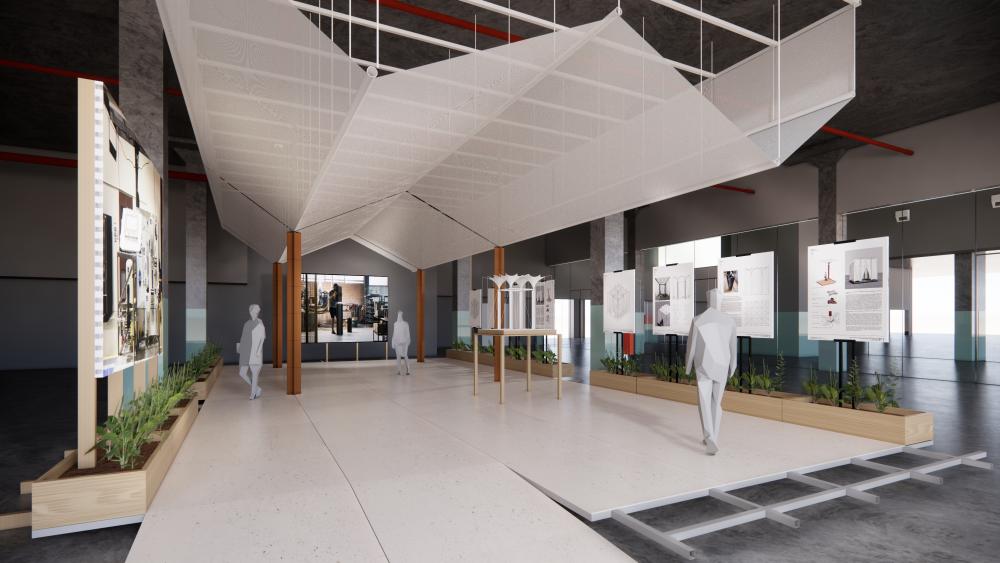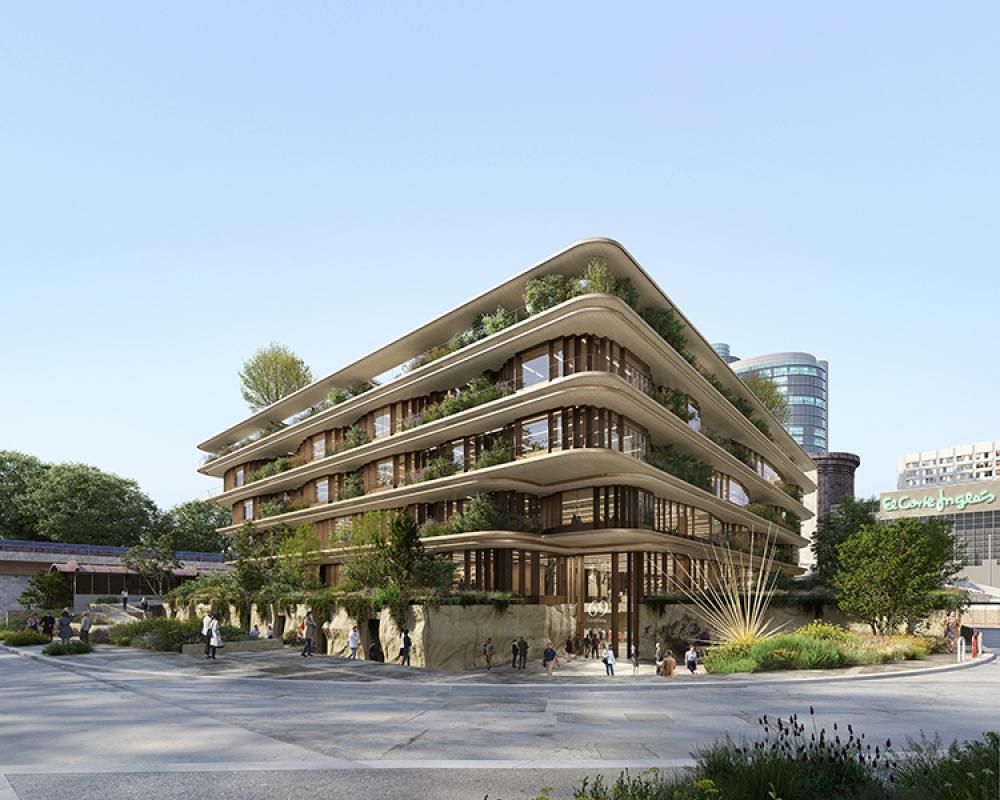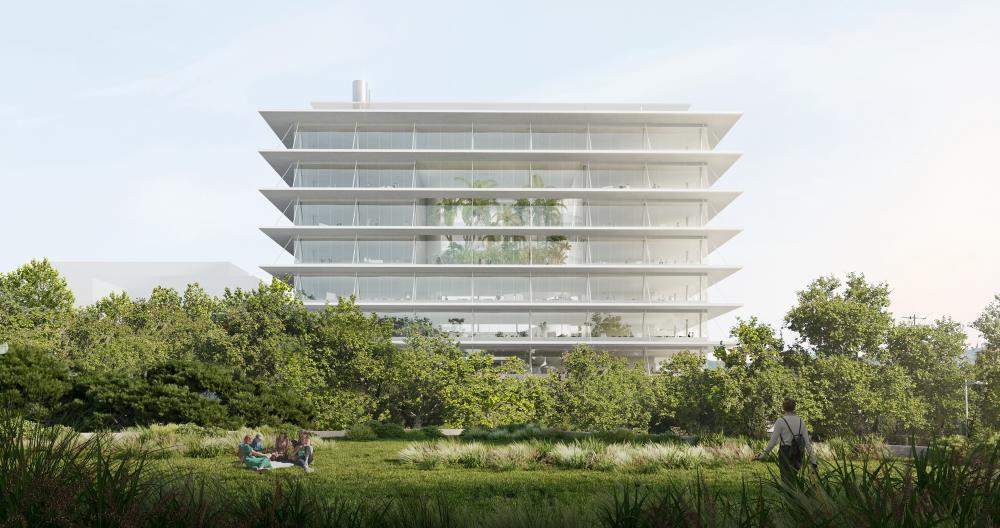Tell us about your work! What do you do? What are you passionate about?
Juan José Castellón (JJC): I am passionate about architecture as a discipline that projects towards the future and bridges different fields of knowledge, doing so with a humanistic and scientific perspective. My research and my practice explore how technology can be a catalyst of innovative design and construction processes.
My aspiration is to harness the huge potential offered by contemporary materials and technologies. I am interested in materializing innovative concepts with a holistic perspective, contextualizing technology in relation not only to the different cultures and traditions, but also to the questions of ecology and social justice. Innovation is rooted in traditional techniques as well as in the knowledge that is accumulated by diverse cultures over many generations. As an architect, I look for buildings that materialize multiple states of equilibrium between our built and natural environments.
What led you to found xmade with your partner?
JJC: I met my partner Miquel Rodríguez when we were both in Basel working for the Swiss architecture office, Herzog & de Meuron (H&dM). This enriching experience gave us the chance to grow in a cultural context that values material as a central element in the design process. We are both from Barcelona and educated in the Catalan tradition of materials, techniques, and crafts. I think this link between architecture and culture was common ground between us. After leaving H&dM, Miquel founded xmade in Barcelona, and I transitioned to academia, first joining the EmTech program at the Architectural Association in London and then moving back to Switzerland to work as a lecturer and researcher at the ETH Zurich. By that time, Miquel had a couple of commissions in Switzerland, and he was looking for a local partner there, while I was looking for an opportunity to reconnect with practice. As a result of our mutual interest and affection, we founded xmade GmbH, a Swiss practice that focuses both on the architectural implementation of material systems and processes, as well as on the design and development of contemporary building envelopes. The Greek philosopher Democritus said, “Everything existing in the universe is the fruit of chance and necessity.” I would add, “and a certain chemistry.”
You are an architect, researcher, and an educator. How do these roles relate to and shape one another?
JJC: I am an architect who operates between academia and practice. The topics that I teach, the research that I conduct, and the projects that I develop belong to the same body of work. In fact, some of my students become my research assistants, and over time, some of my research assistants become collaborators with our practice. Similarly, some of our collaborators at xmade, including engineers, industrial partners, and fabricators, participate in some of my research initiatives and vice versa. My friend and admired colleague, Alberto Campo Baeza, told me once, “Project is research.” Teaching is also research. Research operates in different contexts and formats, and it follows multiple and compatible directions—architecture is research, at least in the way I conceive of it.
xmade has collaborated with numerous architects as a facade consultant. Could you share some of those projects? What is that working relationship like?
JJC: This may be a generational attitude, or perhaps only part of our own philosophy, but we want to challenge the conventional relationship between designers and consultants. Miquel and I both had previous experience working at international practices, and we both believe in a collaborative model of practice that takes advantage of different levels of expertise rather than a hierarchical model of collaboration between architects and consultants.
We are a small practice, and we are all architects. We don’t operate as traditional consultants that provide solutions to specific problems, but rather, as a team of architects with an advanced knowledge in the field of materials and building envelopes. This facilitates a horizontal relationship with our partners from the early stages of the design process. We understand our role as specialists who expand and enhance the capabilities of our colleagues. In fact, some of the commissions are winning entries of competitions that require a multidisciplinary team. We take part in the competition from the conceptual phase, and once we receive the commission, we are involved from design to construction as part of the team.
We take advantage of working with offices of different scales and design methodologies through this collaborative working model. It allows us to have a very flexible structure that can adapt to the varying needs of the projects. Sometimes, we take 15 percent of responsibilities, at other times 50 percent. We always share, and we always learn from each other.
Among our multiple collaborations, our work with Barozzi Veiga, Josep Ferrando Architecture, and TEd’A Arquitectes has made a big impact on our practice. Our collaboration with Burckhardt + Partner for the Swiss Embassy in Seoul opened the door to collaborations with emerging Swiss offices that are designing embassies worldwide. We are living an interesting moment at xmade in which we are trying to resolve the necessary negotiation between the scale of our practice and our capacity to operate in global projects. The solution relies on our flexible but stable structure and on our amazing team of collaborators.
The Food, Energy, and Water (F.E.W.) rooftop prototype, which received the Crossroads X Prize at the 2021 Seoul Biennale of Architecture and Urbanism, will be exhibited at the POST for Sustainability Day celebration. Tell us about this project.
JJC: The invitation to participate in the Seoul Biennale was a gift in the times of COVID. Thanks to this wonderful opportunity, we were able to focus on our ongoing research with clear purpose and objectives.
My design studio at Rice Architecture was selected to participate in the “Global Studios” exhibition, which was a wonderful initiative that brought together students from top universities worldwide with different approaches to relevant questions from multiple academic contexts. We were one of the eight teams selected to build a full-scale prototype. I decided to take this opportunity to materialize the ongoing research that has been developing over the last couple of years in collaboration with my colleague Qilin Li, Professor of Civil and Environmental Engineering, at Rice. Our winning entry operates as a prototypical flexible module, which can be deployed onto any existing urban rooftop. It integrates food, energy, and water infrastructures into a minimum-loss and minimum-waste circular system, while also fostering a sense of community and social interaction.
It was a big honor to receive the Crossroads X Prize for this project, as well as an encouragement to continue and expand this collaborative research model at Rice. Of course, none of this would have been possible without the support of the university, Rice Architecture, Rice Design Alliance, my excellent team of collaborators including students, research assistants, architects, engineers, industrial partners, and fabricators, and the Biennale’s curatorial team.
Unfortunately, we could not travel to Seoul due to the pandemic. Our prototype was physically in Seoul, but we could only see it in images and videos. We began to look for a way to bring this project to Houston and build it here in our city.
After visiting our studio at Rice, Kirby Liu at POST Houston generously offered us the opportunity to build an installation at POST as part of their Sustainability Day event in October 2022. We are excited to participate in this event, working in collaboration with local industrial partners, Arup Houston and Cosentino. Building a collaborative network is crucial to realizing innovative projects in our city.
What else are you working on currently?
JJC: In terms of academic research at Rice, we hope to build the Food, Energy, and Water (F.E.W.) rooftop project on campus in addition to the installation at POST. One of the possible options, and the most exciting, would be to place it on our new Ralph S. O’Connor Building for Engineering and Science. I am currently working on this initiative with my colleagues at the Engineering Department.
In addition, as part of Rice University’s Carbon Hub, I am researching on the potential implementation of carbon nanotube (CTN) fiber-based materials to design ultra-lightweight structures that will retrofit and enhance existing building structures. At the Carbon Hub, we are searching ways to utilize carbon meaningfully for a sustainable future of our cities. I feel fortunate to be surrounded by talented and supportive colleagues, who have the ambition to push innovation beyond conventional standards in their respective fields.
At xmade, we have recently won a couple of competitions in Spain. One of them is the new Barcelona Institute of Science and Technology with Barozzi Veiga, and the other one is the new office building for El Corte Inglés in Madrid with Heatherwick Studio and BAC Engineering. I am particularly excited about these projects because they are located in Spain and in two cities that I love.
What inspires you today?
JJC: Like most of my colleagues, I find inspiration in books, films, art, science, and architecture from all times. It is very important for me to understand our present times in relation to our historical and cultural context. I am inspired by contemporary thinkers such as Zygmunt Bauman and Byung-Chul Han, writers such as Mircea Cărtărescu and Jorge Luis Borges, filmmakers such as Alejandro González Iñárritu and Luis Buñuel, artists such as Jaume Plensa and Eduardo Chillida, and architects such as Hiroshi Sanbuichi and Alberto Campo Baeza, among many others.
I am also deeply inspired by both the simple and complex phenomena in nature.
Who was an important mentor for you earlier in your career?
JJC: I have been fortunate to have had amazing mentors during my career. Among them, Iñaki Ábalos and Juan Herreros were probably the most influential during my early years as an architect. But many others, such as Olga Subirós, Christine Binswanger, Michael Weinstock, Joseph Schwartz, and Alberto Campo Baeza, have made impacts on my career for different reasons and in different moments of my professional life. I am grateful to all of them for giving me the chance to grow and evolve into an architect with a broad and multicultural perspective.
xmade is based in Basel and Barcelona, and you have taught and practiced in multiple countries. What is inspiring about doing your work in Houston? What is frustrating?
JJC: I’m reminded of my meeting in Zurich with Sarah Whiting, dean of Rice Architecture at the time, to discuss my move to Houston. She had asked me a similar question: what could I find in Houston that I didn’t have in Switzerland? I find that you can open new paths and innovate in Houston because there is no fear of trying or failing—Houstonians are bold like me. From Houston, you can fly to the moon and beyond!
That said, navigating new paths takes time, and it involves a cultural change. Architecture is the result of multiple forces and negotiations; they must converge in a common vision from different sectors and stakeholders. I need to better understand Houston’s particular context. This is not frustrating; it is simply the nature of the profession.
What do you think about Houston so far? What is one of your favorite places here?
JJC: I think that Houston and its people look ahead with optimism, even in a world full of uncertainties and crises. This means a lot to me, and helps me hope for a better future. I have heard many times that Houstonians are resilient, and to be honest, I don’t think this is the right term to define us. We are not only meant to resist and recover from disasters—we are much more than that—we are optimistic.
I feel that I am still discovering the city, but I love the impressive trees that surround us. They are at once majestic and fragile, and a natural response to Houston’s unique environment, growing as a material system and a structural response to this air, this rain, this sun, and this soil. They emerge as a promise for new architecture.
Juan José Castellón is an Architect (ETSA Barcelona, 2003), M.Arch. in Emergent Technologies & Design (Architectural Association London, 2011), and Doctor of Sciences by the Swiss Institute of Technology (ETH Zurich, 2017). Currently, he is Assistant Professor at the Department of Architecture at Rice University and Founding Partner at xmade (Basel, Switzerland / Barcelona, Spain). His research is focused on the implementation of contemporary material processes and structural systems in architecture as well as on the integral and ecological design of building infrastructures.
Professor Juan Jose Castellon will open his award-winning exhibit for ‘circular’ rooftop infrastructure at the POST Houston as part of the TEDxHouston Countdown event on Saturday, October 29th. The event will feature talks on sustainability and solutions to our climate crisis. The day culminates in an after-party in POST X’s Atrium.
Get tickets here: https://www.posthtx.com/earth
This interview is a part of the New Design Talent series created by Jack Murphy, former Editor of Cite. It is intended to highlight emerging designers who are newer to the Houston area design community.


